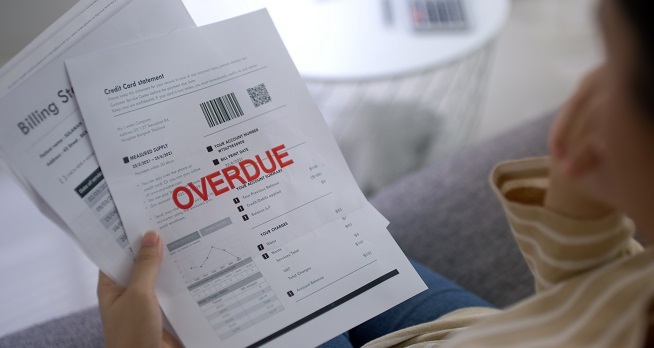
 Data Structure
Data Structure Networking
Networking RDBMS
RDBMS Operating System
Operating System Java
Java MS Excel
MS Excel iOS
iOS HTML
HTML CSS
CSS Android
Android Python
Python C Programming
C Programming C++
C++ C#
C# MongoDB
MongoDB MySQL
MySQL Javascript
Javascript PHP
PHP
- Selected Reading
- UPSC IAS Exams Notes
- Developer's Best Practices
- Questions and Answers
- Effective Resume Writing
- HR Interview Questions
- Computer Glossary
- Who is Who
What is the full form of EMI?
Introduction
Equated Monthly Installment (EMI) refers to a particular monthly payment made by a borrower to a lender that includes both principal and interest in order to repay a loan or debt in a particular time period.

Calculation of EMI
Three variables are taken into consideration while calculating EMI (Equated Monthly Installment): loan amount, rate of interest, and loan term.
The formula to calculate EMI is
$$\mathrm{EMI = [P\: x\: R\: x \:(1+R)^N]/[(1+R)^N-1]}$$
wherein
P = loan's amount.
R = the interest rate (calculated by dividing the annual rate of interest by 12).
N = the loan tenure in months.
For example, if a borrower takes out a loan for Rs. 1,000,000 for 5 years (60 months) at a 10% annual rate of interest, the EMI is calculated below:
R = 10/12/100 = 0.00833 (monthly interest rate)
N = 60 months
P = Rs. 1,00,000
$$\mathrm{EMI = [1,00,000 \:x\: 0.00833\: x \lgroup 1+0.00833\rgroup^{60}]/[\lgroup 1+0.00833\rgroup^{60}-1]}$$
$$\mathrm{= Rs. 2,124.96}$$
Therefore, the EMI for this loan would be Rs. 2,124.96 per month.
Components of EMI
EMI (Equated Monthly Installment) consists of the following
Principle Amount The percentage of the EMI that is used to repay the principal amount loaned.
Interest amount The portion of the EMI used for paying the loan's interest costs.
Loan tenure The duration of the loan's term in months, which determines the number of monthly interest payments are required to be paid.
Interest rate The entire amount of interest that is charged on the loan is known as the interest rate. The Annual Percentage Rate (APR), which is typically used to indicate the interest rate in months, is divided by 12 to obtain the interest rate.
Throughout the loan's tenure, the ratio of the principle to the interest amount that is included in the EMI changes. A higher portion of the EMI is used to pay the interest at the start of the loan period, while a smaller portion is used to pay back the principal.
Factors affecting EMI
Several factors can have an impact on EMI (Equated Monthly Installment), including:
Loan amount The loan amount has a direct impact on the EMI. The EMI climbs in tandem with the loan amount.
Interest rate The EMI increases with an increase in interest rate. A lower interest rate, on the other hand, will lead to a lower EMI.

Loan term The EMI is inversely impacted by the loan term. An EMI will be reduced with a longer loan term while being higher with a loan that has a shorter tenure.
Payment frequency Depending on whether the loan is being returned monthly, or weekly, the EMI amount will change.
Prepayment or part repayment of the loan If the borrower pays in advance or partially repays the loan, the remaining principal will be reduced, lowering the EMI or reducing the loan's term.
Processing fee and other costs Some lenders impose processing fees or other costs for processing loans, which can raise the loan's cost and thus increase the EMI.
Since each of these factors is dependent on the others, any change in one will ultimately have an impact on the EMI.
Conclusion
In conclusion, an EMI (Equated Monthly Installment) is a particular payment per month made to a lender by a borrower which includes both principal and interest and is used to repay a loan or other debt within a given time period. The loan amount, rate of interest, and tenure of the loan are all factored into the EMI computation.
Principle, interest, loan term, and the interest rate are the components that form an installment loan (EMI), and the proportion of principle to interest increases over time. Loan amount, interest rate, loan length, frequency of payments, prepayment or partpayment of the loan, processing cost, and other costs are all factors that affect the EMI. It is essential to understand each of these aspects in order to compute the EMI and determine appropriate loan repayment plans.
Frequently Asked Questions
Q1. Can the EMI be changed while the loan is being repaid?
Ans: The EMI amount often stays constant over the course of the loan payback period. But some lenders could let the borrower change the EMI amount through restructuring the loan or by ensuring advance payments or partpayments on the loan.
Q2. What happens if I miss an EMI payment?
Ans: The lender can charge a penalty fee and add the missed payment to the remaining balance if you miss to pay an EMI payment. This will raise the interest due and the cost of the overall loan.
Q3. Is my loan prepayable? Does it impact my EMI?
Ans: Yes, you can prepay or partly pay off the loans you have. By repaying back the loan early, the remaining principal balance will be reduced, which may shorten the tenure of the loan or reduce the EMI.

